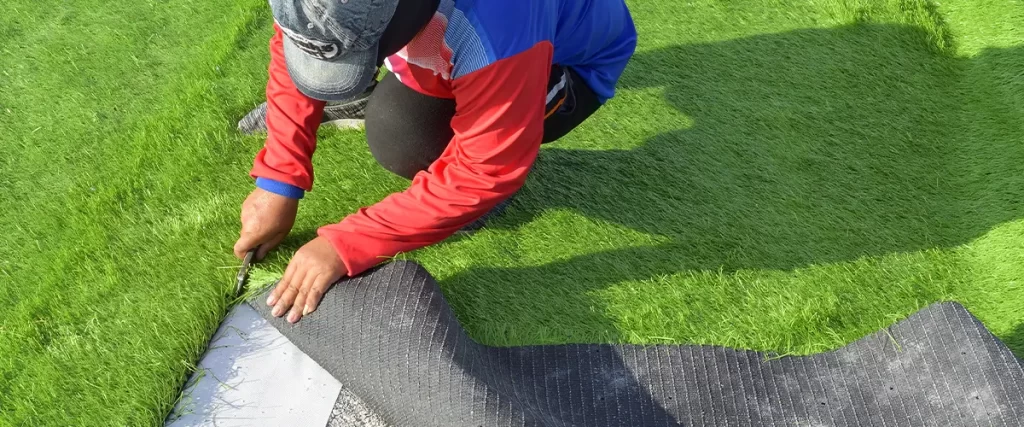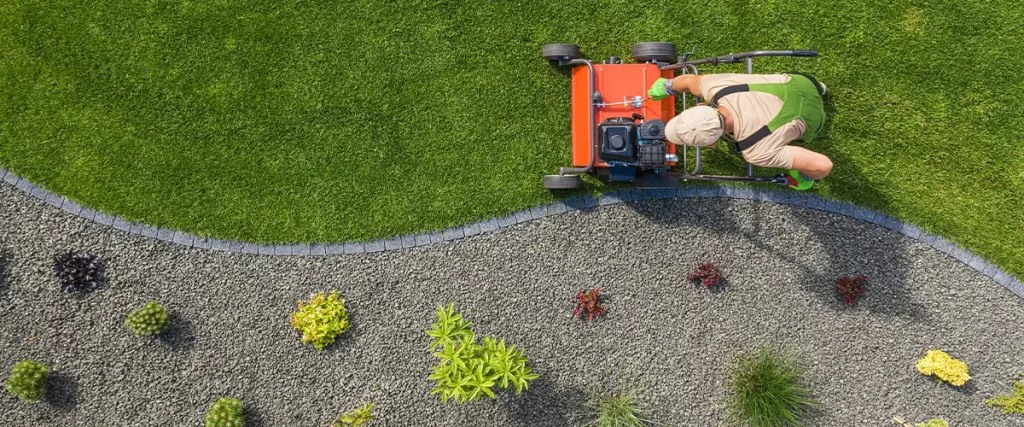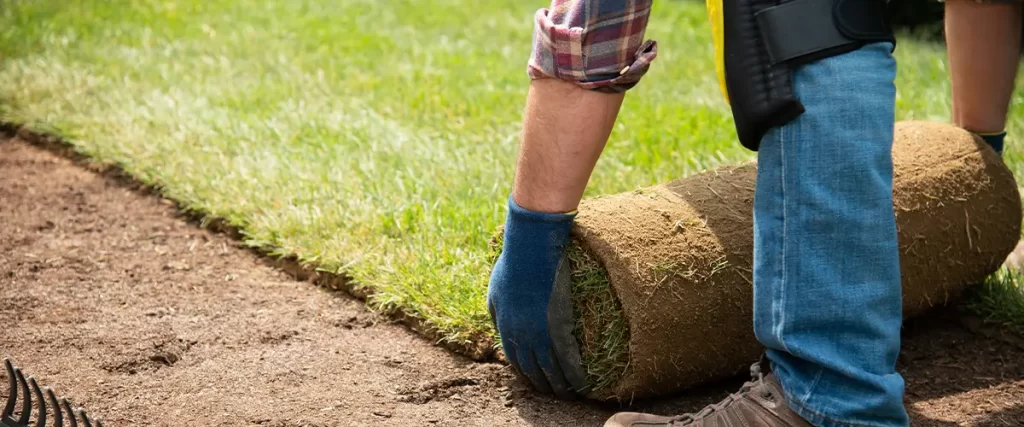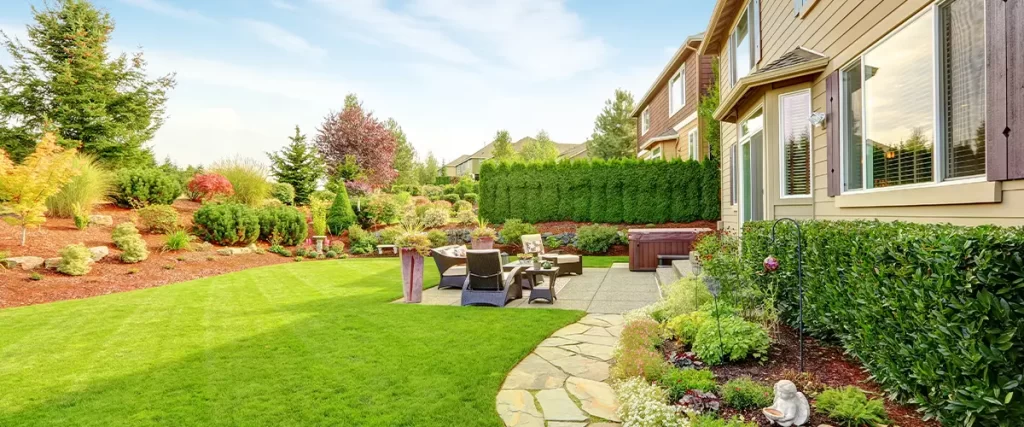When it comes to creating a beautiful lawn, homeowners often find themselves torn between artificial turf and natural grass. Both options have their own set of advantages and challenges, and the right choice depends on your needs, budget, and how much time you’re willing to spend on maintenance.
In this guide, we’ll break down everything you need to know about artificial turf vs natural grass. By the end, you’ll have a clear understanding of which one is better for your yard!

What Is Artificial Turf?
Artificial turf is a synthetic material designed to look and feel like real grass. It’s made from plastic fibers that are woven into a backing and installed over a prepared surface. Modern artificial turf comes in various shades and textures to mimic the natural look of grass.
Key Features of Artificial Turf:
- Made from durable materials like polyethylene or nylon.
- Doesn’t require watering, mowing, or fertilizing.
- Comes in different styles to suit your yard’s aesthetic.
What Is Natural Grass?
Natural grass is, well, the real deal! It’s a living plant that grows in soil and requires regular care like mowing, watering, and fertilizing. Natural grass provides a classic lawn look and offers environmental benefits like oxygen production and cooling effects.
Key Features of Natural Grass:
- Comes in different varieties, like Bermuda, Kentucky Bluegrass, or Fescue.
- Requires consistent maintenance to stay healthy and green.
- Provides a soft, cool surface for outdoor activities.

Comparing Artificial Turf and Natural Grass
Here’s a side-by-side comparison of artificial turf and natural grass to help you weigh your options:
1. Maintenance
- Artificial Turf: Virtually maintenance-free. No mowing, watering, or fertilizing required. Occasional cleaning to remove debris is all it needs.
- Natural Grass: Requires regular mowing, watering, fertilizing, and weed control.
2. Cost
- Artificial Turf: Higher upfront cost but lower long-term maintenance expenses. Installation can range from $5 to $20 per square foot.
- Natural Grass: Lower initial cost, but ongoing expenses for watering, fertilizing, and lawn care can add up over time.
3. Lifespan
- Artificial Turf: Typically lasts 10–20 years, depending on quality and usage.
- Natural Grass: Can last indefinitely with proper care, but sections may need reseeding or replacement.
4. Environmental Impact
- Artificial Turf: Saves water but is made from synthetic materials that aren’t biodegradable.
- Natural Grass: Requires significant water and chemical use but provides natural cooling and improves air quality.
5. Appearance
- Artificial Turf: Always looks green and manicured, regardless of the season.
- Natural Grass: Offers a lush, authentic look but can brown or thin out without proper care.
6. Comfort
- Artificial Turf: Can get hot in direct sunlight and doesn’t have the soft, cool feel of natural grass.
- Natural Grass: Naturally cool and soft, making it more comfortable for bare feet and pets.
7. Durability and Longevity
One key factor in deciding between artificial turf and natural grass is how well each option stands up to wear and tear.
- Artificial Turf: This material is incredibly durable, making it an excellent choice for high-traffic areas. Whether you have kids running around, pets playing, or frequent outdoor gatherings, artificial turf can handle it. Many products are designed to resist fading and wear, ensuring your lawn stays pristine for years.
- Natural Grass: While natural grass can recover from moderate use, heavy traffic can quickly turn it into a patchy, muddy mess. Certain grass types, like Bermuda or Zoysia, are more tolerant of foot traffic, but overall, natural grass requires more care to maintain its appearance in busy yards.
8. Climate Suitability
Your local climate can also influence which option works best:
- Artificial Turf: Ideal for dry or drought-prone areas where watering a lawn would be costly or impractical. It stays green and lush even in the hottest conditions.
- Natural Grass: Thrives in regions with regular rainfall and moderate temperatures. Certain grass varieties can adapt to different climates, but all will need water and maintenance to look their best.

Benefits of Artificial Turf
Artificial turf has gained popularity for its convenience and consistency. Here’s why homeowners love it:
- Low Maintenance: Say goodbye to mowing, watering, and fertilizing.
- Always Green: Looks perfect year-round, regardless of weather.
- Durability: Withstands heavy use from kids, pets, or outdoor events.
- Water Savings: Great for drought-prone areas where water conservation is important.
Benefits of Natural Grass
Natural grass has been a classic choice for generations, and it’s easy to see why:
- Eco-Friendly: Produces oxygen, absorbs carbon dioxide, and reduces heat in your yard.
- Soft and Cool: Feels comfortable underfoot and provides natural cooling.
- Authenticity: Offers the traditional beauty and feel of a real lawn.
- Biodiversity: Supports insects and other wildlife in your yard.
Drawbacks of Artificial Turf
While artificial turf has its perks, it’s not without downsides:
- High Upfront Cost: Installation is expensive compared to natural grass.
- Heat Retention: Can become uncomfortably hot on sunny days.
- Environmental Concerns: Made from synthetic materials that aren’t biodegradable.
Drawbacks of Natural Grass
Natural grass also has its challenges:
- Time-Consuming Maintenance: Regular care is needed to keep it looking its best.
- Water Usage: Requires significant watering, especially in dry climates.
- Seasonal Changes: Can brown or thin out in extreme weather conditions.
Which Option is Right for You?
The best choice depends on your priorities. Consider these factors:
Choose Artificial Turf if:
- You want a low-maintenance yard that always looks perfect.
- You live in a drought-prone area and need to save water.
- You have pets or kids and need a durable surface.
Choose Natural Grass if:
- You love the look and feel of a traditional lawn.
- You’re comfortable with regular maintenance.
- You want an eco-friendly yard that supports local wildlife.
FAQs About Artificial Turf vs Natural Grass
Q: Can pets use artificial turf?
A: Yes! Artificial turf is pet-friendly and easy to clean. Many turf options are designed to drain urine and resist odors.
Q: Does natural grass require a lot of water?
A: It depends on the type of grass and your climate. Warm-season grasses need less water than cool-season varieties, but all natural grass requires regular watering to stay healthy.
Q: How long does artificial turf last?
A: High-quality artificial turf typically lasts 10–20 years with proper care.
Q: Is artificial turf safe for kids?
A: Yes, but keep in mind that it can get hot in direct sunlight. Adding shade or cooling the surface with water can make it more comfortable.
Q: Can I install artificial turf myself?
A: While it’s possible, professional installation ensures the turf is laid correctly and lasts longer.

Choosing Between Artificial Turf and Natural Grass
Both artificial turf and natural grass have their advantages, so the right choice depends on your needs, lifestyle, and budget. If you want a low-maintenance, always-green lawn, artificial turf is a great option. But if you love the feel of real grass and don’t mind putting in the work, natural grass might be the better choice.
Whether you’re considering artificial turf or want to revamp your natural grass lawn, Site Pros Landscaping can help you create the outdoor space of your dreams. Our expert team will guide you through the process and deliver stunning results that fit your lifestyle and budget.
Contact Site Pros Landscaping today at (407) 480-0713 to schedule your consultation and take the first step toward a beautiful, hassle-free lawn!
